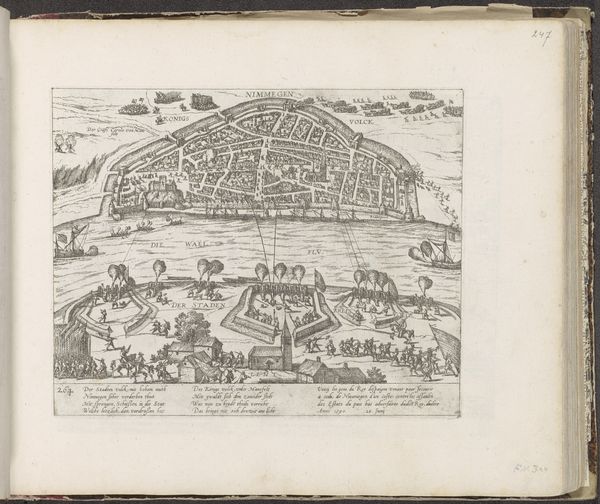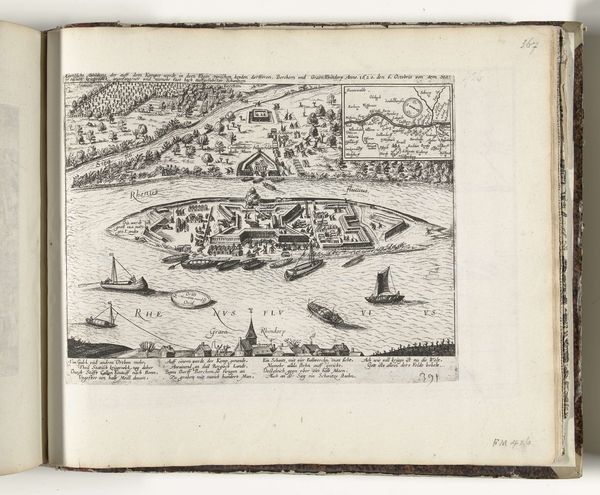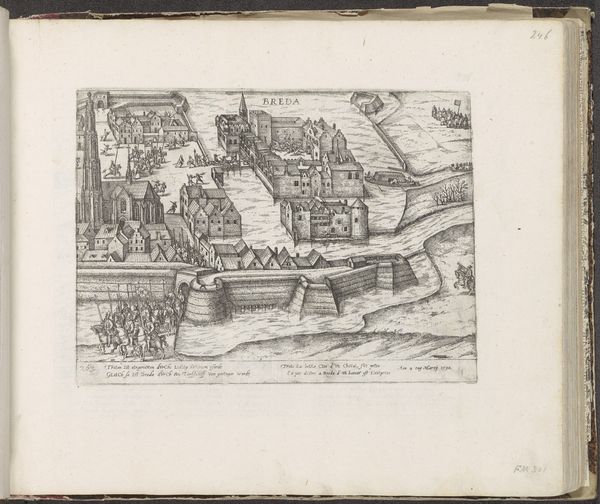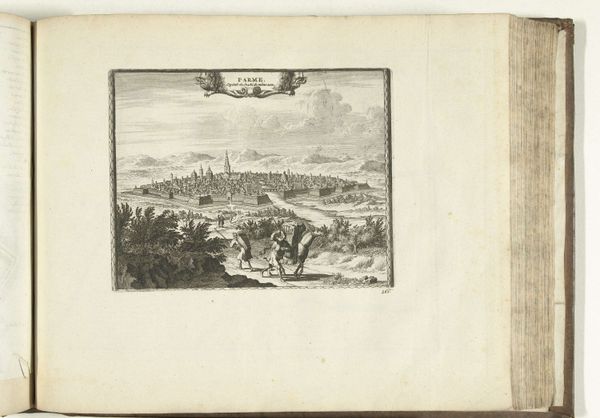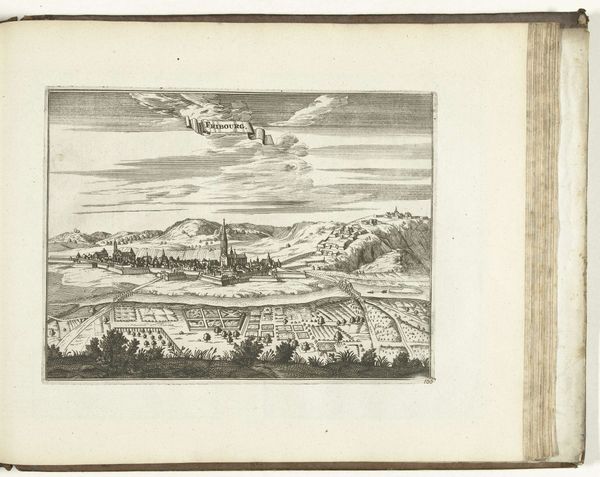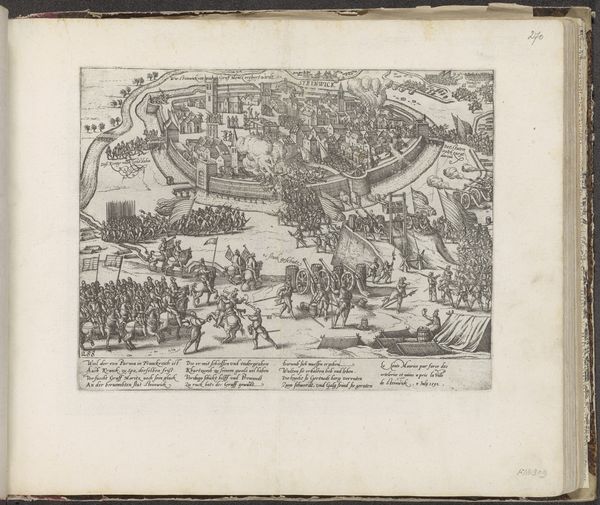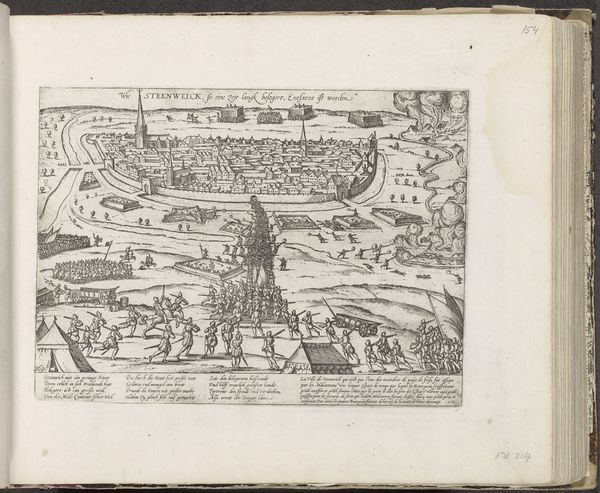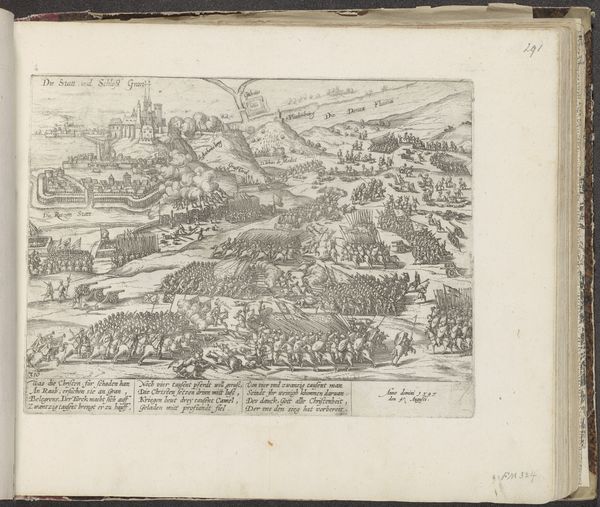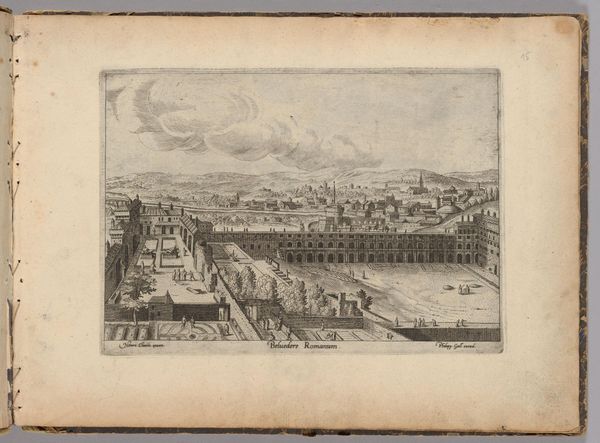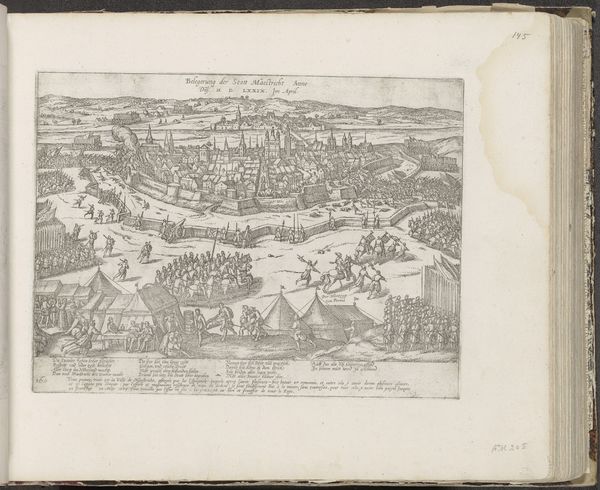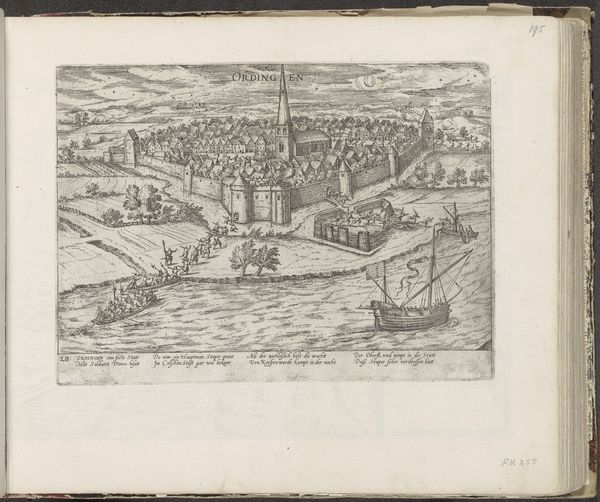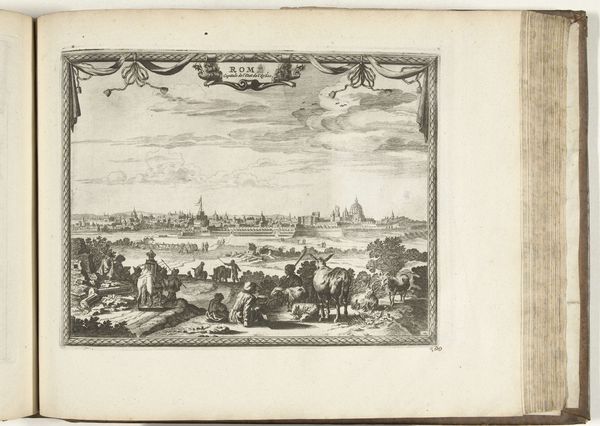
graphic-art, print, engraving
#
graphic-art
#
ink paper printed
# print
#
landscape
#
line
#
cityscape
#
engraving
Dimensions: height 170 mm, width 213 mm
Copyright: Rijks Museum: Open Domain
Curator: This engraving, titled "Gezicht op Messina, 1726," offers us a detailed perspective of Messina as it appeared in the 18th century. Editor: It’s immediately striking how meticulously rendered the city is, this precise delineation. There’s a strong sense of order, but also a curious stillness, as if suspended in time before inevitable shifts in power. Curator: That's perceptive. Look closer, and we find encoded social hierarchies rendered within the urban planning of the port city and its relation to the ocean. Trade routes of goods and unfortunately also slaves, economic power expressed through maritime presence. Editor: The ships at harbor are a powerful, repeated motif. They represent a projection of dominance but what do they protect or obscure. Perhaps, if we understand the vessels as individual characters, then, we understand the greater picture of how commerce functioned as a character in people’s lives? Curator: Precisely! The repetitive symbols of industry serve as tools reflecting the cultural and historical framework but who are we speaking to today. If we are reflecting upon history and our modern reality, then how is the past present now, how did this representation create a myth for that port? What kind of myth are we propagating by including such a work in the Rijksmuseum’s permanent collection? Editor: It reminds us of art’s purpose as both a reflection and shaper of collective memory, it also tells a cautionary tale. When we see those same visual cues mirrored, even abstractly in more contemporary works, this imagery can help viewers unpack and discuss difficult themes. This also holds some tension though doesn’t it? We as iconographers, become, essentially, cartographers and navigators of a symbolic, visual world Curator: In acknowledging this we may promote a discourse of decolonization. By deconstructing art as “art”, by focusing on our agency as its audience and participants, the themes explored transcend into conversation of resistance of imposed structure on individual experience. Editor: Ultimately, “Gezicht op Messina” offers not just a geographical picture, but also a nuanced meditation on time, commerce, social structures, and legacy through persistent and often loaded, iconic symbolism. Curator: Indeed. This single sheet captures and allows for continued exploration, in this case through considering socio-political dimensions of urban portraiture.
Comments
No comments
Be the first to comment and join the conversation on the ultimate creative platform.
